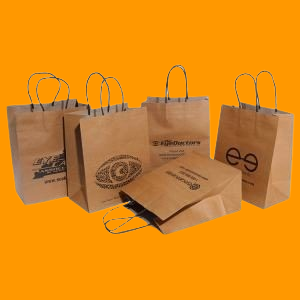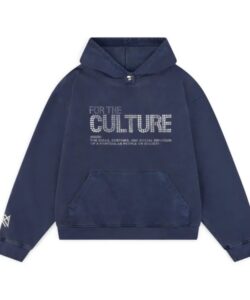
In today’s world, the significance of sustainable and aesthetically pleasing packaging cannot be overstated. Branded paper bags have emerged as a powerful tool for businesses to not only carry products but also to convey their brand values and environmental commitment. Over the past few decades, the shift from plastic to paper bags has been driven by both environmental concerns and consumer preferences for more eco-friendly options. Branded paper bags are now ubiquitous in retail environments, from high-end boutiques to everyday grocery stores. This article explores the evolution, benefits, design considerations, and future prospects of branded paper bags, emphasizing their role in modern marketing and environmental sustainability.
Historical Evolution of Paper Bags
The history of paper bags dates back to the mid-19th century, with the invention of the first machine to produce flat-bottom paper bags by Francis Wolle in 1852. These early paper bags were simple and functional, primarily used for grocery shopping. Over time, as the retail industry evolved, so did the design and use of paper bags. The introduction of branded paper bags began in the early 20th century, coinciding with the rise of consumer culture and advertising.
As businesses recognized the potential of branded packaging, paper bags became a canvas for marketing messages and brand identities. The 1960s and 1970s saw significant advancements in printing technology, allowing for more intricate designs and colors on paper bags. This period also marked the beginning of a growing awareness of environmental issues, leading to an increased preference for paper bags over plastic ones. Today, the evolution of branded paper bags reflects a blend of historical utility, marketing innovation, and environmental consciousness.
Environmental Benefits of Branded Paper Bags
One of the primary reasons for the widespread adoption of paper bags in recent years is their environmental benefits. Unlike plastic bags, which can take hundreds of years to decompose and often contribute to pollution, paper bags are biodegradable and made from renewable resources. The use of recycled materials in paper bag production further enhances their eco-friendly credentials. Additionally, paper bags are easier to recycle, reducing the overall waste footprint.
Branded paper bags serve as a testament to a company’s commitment to sustainability. By choosing paper over plastic, businesses can align themselves with environmentally conscious consumers who prioritize green practices. This alignment not only helps in building a positive brand image but also fosters customer loyalty. The shift towards paper bags also supports the broader goal of reducing plastic waste, contributing to cleaner oceans and a healthier planet. Companies that invest in sustainable packaging solutions, such as branded paper bags, are often seen as leaders in corporate social responsibility.
Branding and Marketing through Paper Bags
In the realm of marketing, every touchpoint with the consumer is an opportunity to reinforce brand identity. Branded paper bags offer a unique and tangible medium for businesses to communicate their brand message. The design, color, and logo on a paper bag can leave a lasting impression on customers, transforming a simple carrying tool into a mobile advertisement. Unlike digital marketing, which is often fleeting, a well-designed paper bag can be reused multiple times, extending the reach of the brand message.
Effective branding on paper bags involves a strategic approach to design. Companies must consider their brand colors, fonts, and overall aesthetic to ensure that the bag aligns with their brand image. The placement of the logo and any additional information, such as website URLs or social media handles, should be thoughtfully integrated into the design. Moreover, the quality of the paper and the printing technique can impact the overall perception of the brand. High-quality, durable paper bags reflect positively on the brand, suggesting a commitment to quality and attention to detail.
Design Trends in Branded Paper Bags
Design trends in branded paper bags are continually evolving, influenced by changes in consumer preferences, technological advancements, and cultural shifts. One notable trend is the use of minimalist designs that emphasize simplicity and elegance. Minimalist designs often feature clean lines, monochromatic color schemes, and subtle branding elements. This approach appeals to consumers who appreciate understated sophistication and aligns with contemporary aesthetic sensibilities.
Another trend is the incorporation of eco-friendly themes in the design. Many brands are using natural colors, earthy textures, and eco-conscious slogans to highlight their commitment to sustainability. This trend not only attracts environmentally conscious consumers but also enhances the perceived value of the brand. Additionally, the use of innovative materials, such as recycled paper or organic inks, is gaining popularity, further reinforcing the brand’s green credentials.
Personalization is also becoming a key trend in the design of branded paper bags. Companies are increasingly offering customized designs to cater to specific events, seasons, or customer segments. Personalized bags create a sense of exclusivity and can enhance customer engagement. For instance, limited-edition designs for holidays or special collaborations can generate buzz and drive sales. The ability to adapt the design of paper bags to reflect current trends and consumer preferences is a crucial aspect of successful branding.
The Role of Technology in Paper Bag Production
Technological advancements have revolutionized the production of paper bags, enabling greater efficiency, quality, and customization. Modern printing techniques, such as digital printing, have expanded the possibilities for intricate and vibrant designs. Digital printing allows for high-resolution images and a wider range of colors, making it possible to create eye-catching and detailed graphics on paper bags.
Moreover, digital printing supports smaller print runs, which is ideal for limited editions or personalized designs. This flexibility is crucial for businesses that want to experiment with different branding strategies without committing to large quantities.
Sustainable production techniques have also been enhanced by technology. The use of water-based inks, which are less harmful to the environment compared to solvent-based inks, has become more prevalent. Similarly, improvements in recycling technology have made it easier to incorporate recycled materials into the production process. This not only reduces waste but also appeals to eco-conscious consumers. As technology continues to evolve, it will undoubtedly bring further innovations in the production and design of branded paper bags, pushing the boundaries of what is possible in sustainable packaging.
Economic Impact of Branded Paper Bags
The shift towards branded paper bags has significant economic implications for various stakeholders, including manufacturers, retailers, and consumers. For manufacturers, the demand for high-quality, eco-friendly paper bags has led to the growth of the paper bag industry. This growth has created new business opportunities and jobs in the production and design of paper bags. Investments in advanced manufacturing technologies have further fueled this growth, making it possible to produce high volumes of paper bags efficiently and cost-effectively.
Consumers, on the other hand, are increasingly willing to pay a premium for products and services that align with their values, including sustainability. The use of branded paper bags can justify a higher price point for goods, as consumers perceive these brands as more responsible and trustworthy. Additionally, the durability and aesthetic appeal of high-quality paper bags can make them a desirable item for consumers, who may reuse them for other purposes, further extending the brand’s reach.
The economic benefits of branded paper bags extend beyond individual businesses. By reducing reliance on plastic bags, communities can lower waste management costs and mitigate the environmental impact associated with plastic pollution. This, in turn, can lead to a healthier environment and improved quality of life, which are essential components of sustainable economic development.
Challenges and Solutions in the Adoption of Branded Paper Bags
Another challenge is the durability of paper bags. While high-quality paper bags are quite durable, they are still more susceptible to damage from moisture compared to plastic bags. This can be a concern for certain products, particularly in regions with high humidity or frequent rainfall. To address this, manufacturers have developed water-resistant coatings and laminations that enhance the durability of paper bags without compromising their recyclability.
The availability of raw materials is also a consideration. The production of paper bags relies on the availability of sustainable sources of paper, such as recycled paper or sustainably managed forests. Ensuring a steady supply of these materials is crucial for the long-term viability of paper bag production. This requires collaboration between manufacturers, suppliers, and policymakers to promote sustainable forestry practices and efficient recycling systems.
Consumer behavior is another factor that can impact the adoption of branded paper bags. While there is a growing preference for eco-friendly products, some consumers may still prefer the convenience of plastic bags. Education and awareness campaigns can play a significant role in shifting consumer attitudes. By highlighting the environmental benefits and the aesthetic appeal of branded paper bags, businesses can encourage more consumers to embrace this sustainable option. If you want to know more information about extra large paper bags with handles visit TopUSAPackaging.
Future Prospects of Branded Paper Bags
The future of branded paper bags looks promising, driven by increasing consumer demand for sustainable products and ongoing advancements in technology. As businesses continue to recognize the value of eco-friendly packaging, the adoption of branded paper bags is expected to grow. Innovations in materials and production techniques will likely lead to even more durable, cost-effective, and environmentally friendly paper bags.
One potential area of growth is the integration of smart technology into paper bags. For instance, QR codes or NFC tags embedded in the bags can provide consumers with additional information about the product or the brand, enhancing the shopping experience. This technology can also be used to track the lifecycle of the bag, from production to disposal, providing valuable data for sustainability efforts.
Collaboration between industries and governments will be crucial in promoting the widespread adoption of branded paper bags. Policies that support sustainable practices, such as bans on single-use plastics and incentives for using recycled materials, can accelerate the transition to paper bags. Additionally, public-private partnerships can help develop the infrastructure needed for efficient recycling and waste management.
In conclusion,
Branded paper bags represent a significant opportunity for businesses to enhance their brand image, meet consumer demand for sustainable products, and contribute to environmental conservation. While challenges remain, the potential benefits far outweigh the obstacles. By embracing the evolving trends and technological advancements, businesses can leverage branded paper bags as a powerful tool for marketing and sustainability. The future of branded paper bags is bright, promising a blend of functionality, aesthetic appeal, and environmental responsibility.


























